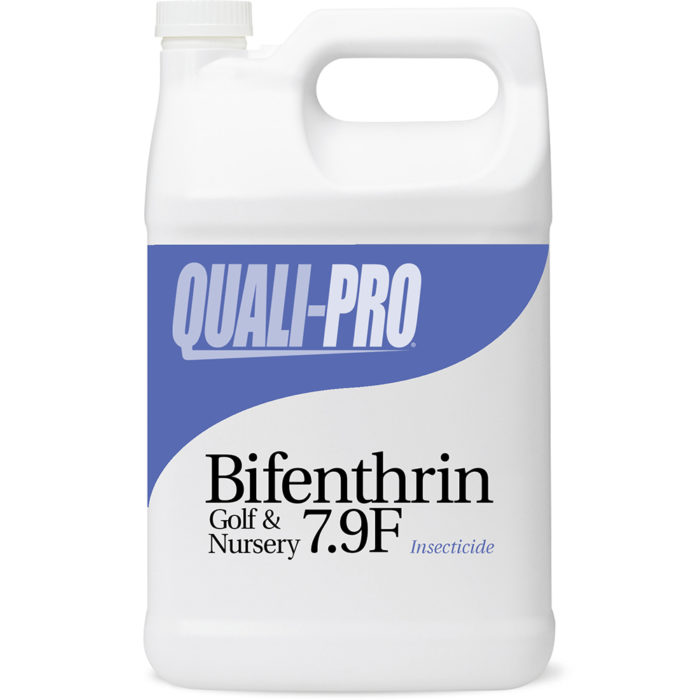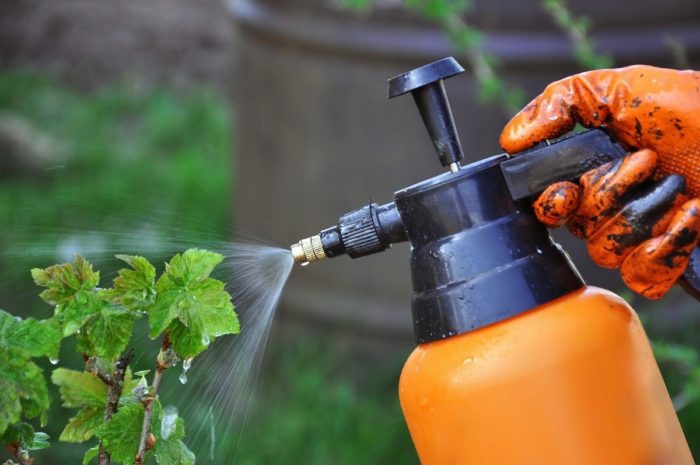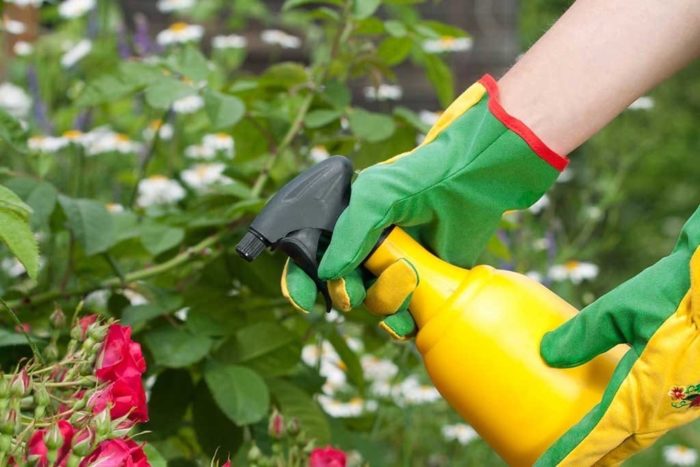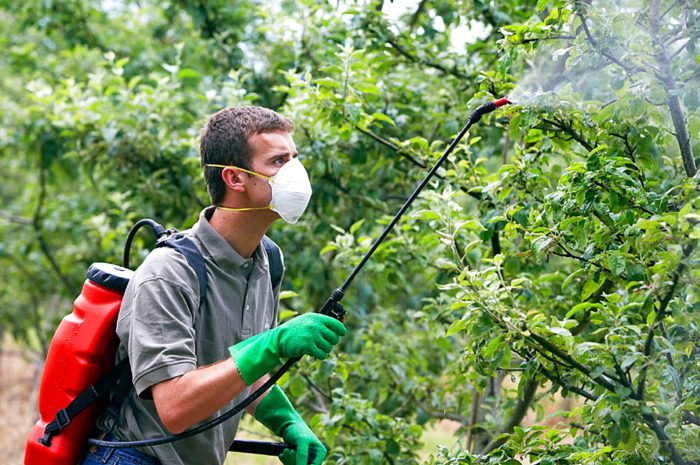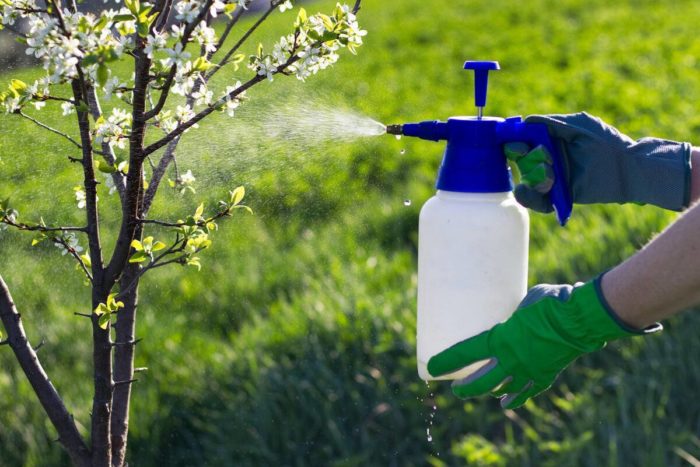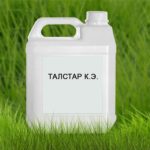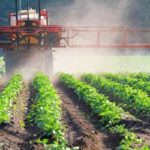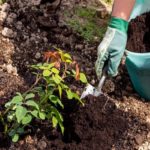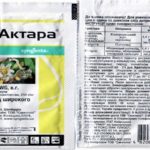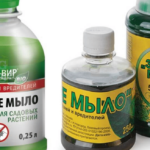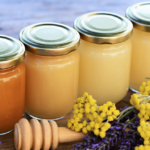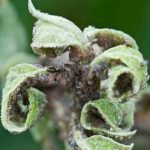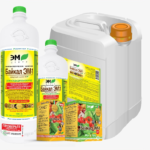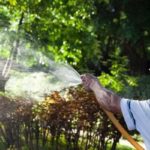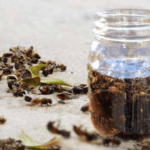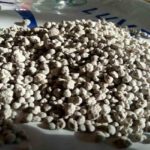Bifenthrin is a pest and parasite control chemical used in agriculture. The substance was first synthesized in 1979 and put into production six years later. In Russia it is produced under the brands “Talstar”, “Prostor”, “Semaphore”. When processing crops, it is important to follow the instructions, because the insecticide bifenthrin is toxic to insects, animals and humans.
- Physical and chemical characteristics of bifenthrin
- Effect of bifenthrin on harmful organisms
- Areas of application of the insecticide bifenthrin
- Use of bifenthrin in agriculture
- Use of bifenthrin for wood protection
- Controlling Stock Pests with Bifenthrin
- Rules for using the insecticide bifenthrin
- Toxicological properties and characteristics of bifenthrin
- Toxicological data
Physical and chemical characteristics of bifenthrin
Particles of matter in their pure form look like solid crystals. They form a white, waxy solid with a faint sweet odor. During heat treatment, the solid mass melts to a liquid oily state, turning into a technical product, and acquires a light brown color.
Properties of bifenthrin:
- molecular mass - 423 daltons;
- crystals melt at a temperature of 70 degrees Celsius, the technical product - at 51-66 degrees Celsius;
- almost insoluble in water, precipitates;
- soluble in acetone, chloroform, toluene, ether;
- partially retained in the soil.
The insecticide decomposes in the soil from 7 days to 8 months, depending on its composition. Bifenthrin is available in the form of a concentrated emulsion, oil dispersion, and flowable paste.
Effect of bifenthrin on harmful organisms
The substance belongs to synthetic pyrethroids - neurotoxic poisons that instantly kill insects upon physical contact or eating. The pests die from paralysis caused by blocking of nerve impulses under the influence of the insecticide.
Bifenthrin is effective against all types of insects:
- Coleoptera - Colorado potato beetle, dung beetle, bark beetle;
- Orthoptera - mole cricket, grasshopper;
- Diptera - Drosophila, mosquito;
- Lepidoptera - cutworm, moth, cabbageweed.
The drug destroys eggs and larvae of pests. Bifenthrin is an effective repellent against mosquitoes and malaria mosquitoes. But bloodsuckers quickly become addicted to pyrethroids. The drug is also used to combat ticks and ants.
Areas of application of the insecticide bifenthrin
The substance is used to kill and repel insects.The main area of application of bifenthrin is agriculture. The drug “Talstar” based on it is intended for industrial lands, farms and personal households. In addition to its insecticidal properties, the substance has a long-term disinfecting effect.
Use of bifenthrin in agriculture
Vegetables, grain crops, fruit trees and shrubs, as well as vineyards and tea plantations are treated with insecticide. Bifenthrin is used to prevent the spread of pests in ornamental gardens.
As part of the drug "Talstar" the substance is highly effective in the fight against whitefly, a universal pest that attacks vegetable and flower crops, as well as the apple moth. Preventative treatment prevents tick outbreaks.
In the USA, bifenthrin is used to combat red or fire ants and termites. The insecticide is indispensable in private homes and on farms. In American agriculture, it is used in corn fields, as well as for processing raspberries and hops.
Use of bifenthrin for wood protection
The drug is effective against technical and stem pests. The wood is unattractive to insects for two months after treatment. The blanks are protected during transportation and storage from bark beetles, longhorn beetles, and weevils. The color of the tree does not change under the influence of the insecticide.
Since 2012, the drug has not been included in the state register of substances permitted for wood processing. Since July 2019, the substance has been banned for use in agriculture in the European Union, but is permitted for wood preservation.
Controlling Stock Pests with Bifenthrin
The substance is widely used for disinfecting warehouses and various storage areas for agricultural products, as well as grain processing equipment.
As part of the drug "Prostor" and in combination with the insecticide malathion, bifenthrin is used to treat:
- food grains;
- fodder;
- seeds;
- flour, cereals
The drug prevents the appearance of pests in grain stocks. It is used to treat granaries and the territory of processing enterprises. Workers and grain loading are allowed one day after spraying.
Rules for using the insecticide bifenthrin
For treating premises and equipment, the product is prepared more concentrated than for spraying plant crops. Insecticide concentration:
- when processing empty warehouses - 15 milliliters per 100 square meters;
- when spraying cereals - 100-1000 milliliters per ton;
- when disinfecting filled warehouses - 125 milliliters per 100 square meters.
The average consumption of the drug is 16 milliliters per square meter. Treated premises and products must be ventilated throughout the day.
Toxicological properties and characteristics of bifenthrin
The substance is toxic to fish because it stays in their body longer due to its slow metabolism. The drug "Talstar" is prohibited for use in the zone of water environmental protection facilities.
The drug is moderately toxic to small domestic animals and birds. The lethal dose for a rabbit is 2 grams per kilogram of weight, for quail - 1.8 grams per kilogram. A high concentration of insecticide slows down the development of bee larvae and negatively affects their fertility.
Bifenthrin has low toxicity for humans and does not cause irritation to the skin and mucous membranes of the eyes.The substance is more dangerous when combined with impurities that are added to make it stable.
Toxicological data
Bifenthrin is safe in small doses, but its frequent use leads to increased concentrations of toxic components. Therefore, in accordance with hygiene standards, the following restrictions are established:
| Permissible levels and safe doses | Index |
| Daily allowance for a person | 0.015 milligrams per kilogram |
| For soil | 0.1 milligrams per kilogram |
| For water | 0.005 milligrams per cubic decimeter |
| For air | 0.015 milligrams per cubic meter |
| Permissible content in fruits and seeds | Indicator (milligram per kilogram) |
| Grape | 0,2 |
| Cabbage | 1,0 |
| Corn | 0,05 |
| cucumbers | 0,4 |
| Rape | 1,0 |
| Sugar beet | 0,05-0,1 |
| Tomatoes | 0,4 |
| Temporary permissible level in imported products | Indicator (milligram per kilogram) |
| Strawberry | 0,1 |
| Cow's milk | 0,05 |
| Flour | 0,2 |
| Beef | 0,5 |
| Citrus | 0,05 |
| Eggs | 0,01 |
The level of drug content in domestic and imported agricultural products is determined by the state toxicological examination. If the indicators are normal, I receive vegetables, fruits and animal productst certificate and sent for implementation.

